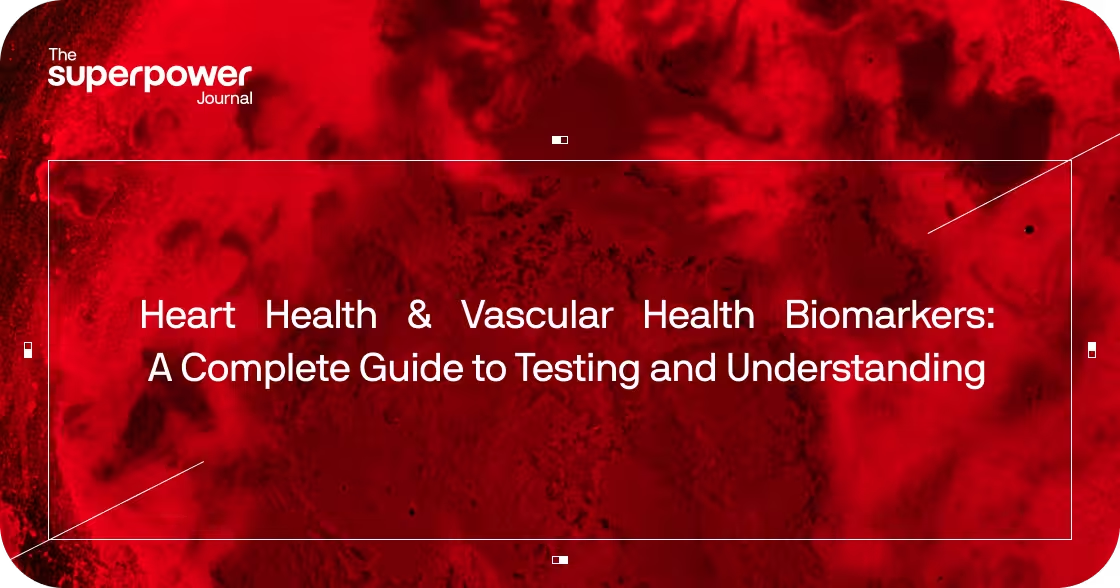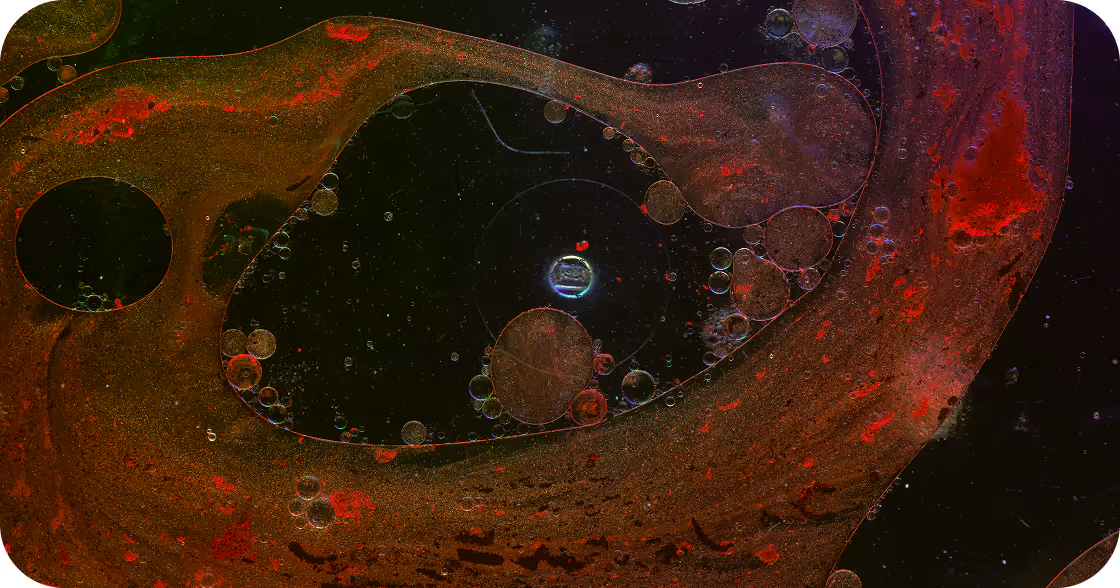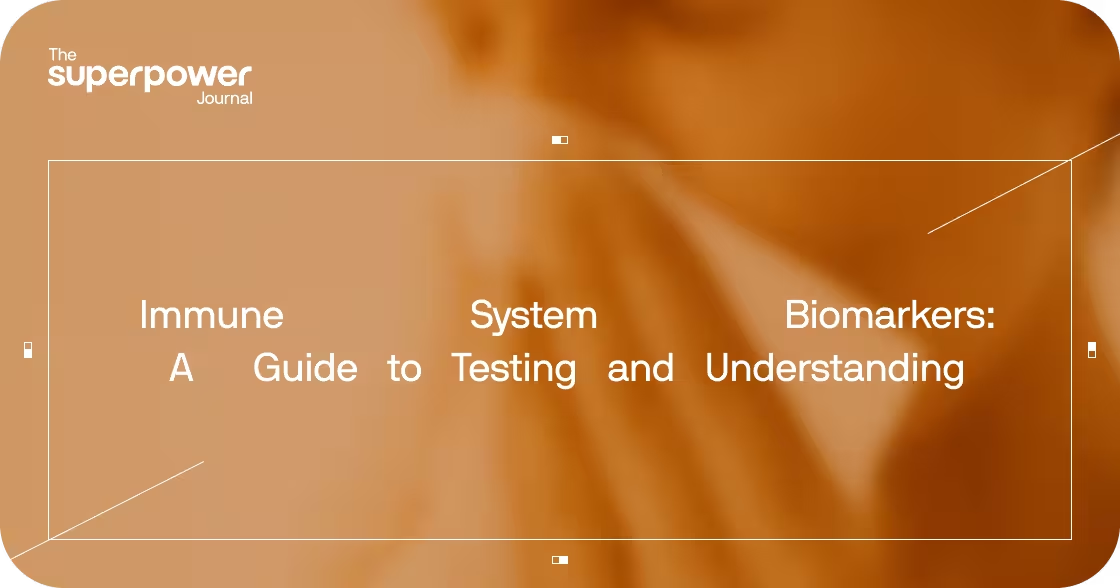Cardiovascular disease (CVD) is the leading global cause of death, accounting for an estimated 17.9 million deaths per year¹. In the United States, approximately one in every five deaths is attributable to cardiovascular conditions². Often, disease develops silently for decades before symptoms arise. Biomarker testing offers a window into cardiovascular health by detecting changes in lipid metabolism, inflammation, coagulation, and cardiac strain before clinical events occur.
Understanding heart and vascular biomarkers is therefore central not only to assessing risk of heart attack and stroke, but also to evaluating broader systemic health. The cardiovascular system is deeply interconnected with the brain, kidneys, endocrine organs, and immune system. When vessels or the heart become dysfunctional, consequences reverberate across multiple organ systems³.
Why Cardiovascular Dysfunction Matters
The cardiovascular system is not only a network of “pipes” but a dynamic organ system that regulates perfusion, pressure, clotting, and immune signaling. Arterial dysfunction manifests through atherosclerosis, vascular stiffness, or impaired endothelial function. These factors contribute to hypertension, ischemic heart disease, and stroke — together the largest contributors to CVD burden² ³.
- Arterial stiffness is closely linked with aging and hypertension and independently predicts cardiovascular outcomes and cognitive decline⁴ ⁵.
- Endothelial dysfunction impairs blood vessel dilation, contributes to plaque formation, and has been identified as an early marker of vascular disease⁶.
- Kidney and brain vulnerability: Hypertension and vascular injury accelerate kidney damage and are strongly associated with vascular dementia³ ⁵.
The systemic effects of vascular dysfunction explain why CVD is a multisystem disease rather than a problem confined to the heart.
The Systems Biology of Cardiovascular Biomarkers
Cardiovascular biomarkers reflect interactions among multiple physiological systems:
- Metabolic system: Dyslipidemia and insulin resistance are primary drivers of atherosclerosis. Elevated triglycerides, LDL cholesterol, and glucose are consistently associated with higher risk⁷.
- Immune system: Chronic low-grade inflammation accelerates atherosclerosis. Biomarkers such as high-sensitivity C-reactive protein (hs-CRP) have been validated in multiple meta-analyses as predictors of cardiovascular events⁸.
- Endocrine system: Hormonal changes, including menopause-related shifts, affect lipid metabolism and cardiovascular risk. Consensus statements highlight higher risk in postmenopausal women, in part due to lipid changes⁹.
- Renal system: Chronic kidney disease (CKD) is both a cause and a consequence of vascular dysfunction. Reduced glomerular filtration rate and elevated creatinine are strong predictors of cardiovascular mortality¹⁰.
- Neurological system: Autonomic dysfunction, expressed as reduced heart rate variability, is linked to higher cardiovascular morbidity and mortality¹¹.
Importantly, clinicians rely on biomarker patterns rather than isolated markers for risk stratification. Large-scale prevention guidelines emphasize lipid panels and other combinations rather than single tests² ⁷ ⁹.
What Are Cardiovascular Biomarkers?
Biomarkers are measurable molecules in the blood that reflect cardiovascular physiology or pathology. They are used for:
- Risk prediction (e.g., LDL cholesterol, ApoB, hs-CRP).
- Early diagnosis of injury or stress (e.g., troponin, NT-proBNP).
- Monitoring treatment response (e.g., lipid lowering on statins, anticoagulation efficacy).
Consensus guidelines recommend a panel approach rather than reliance on a single biomarker² ⁷ ⁹.
U.S. Statistics That Highlight the Problem
- Nearly half (48%) of U.S. adults have some form of cardiovascular disease².
- Over 94 million U.S. adults have elevated cholesterol².
- About 45% of adults have hypertension².
- African American adults experience higher rates of hypertension-related complications², while sex-specific presentation differences in women have been documented in large cohort analyses⁹.
These data highlight the widespread burden and support routine cardiovascular health screening.
Key Cardiovascular Biomarkers
Lipid Biomarkers
- Total cholesterol: Broad measure, though less predictive than other lipid fractions.
- LDL cholesterol (LDL-C): Strong causal role in atherosclerosis established in genetic, epidemiological, and interventional studies¹².
- HDL cholesterol (HDL-C): Inversely associated with risk, but very high levels are not always protective¹³.
- Triglycerides: Elevated triglycerides signal insulin resistance and correlate with higher CVD risk¹⁴.
- Apolipoprotein B (ApoB): Reflects the number of atherogenic lipoprotein particles. Meta-analyses show ApoB outperforms LDL-C alone in predicting events¹² ¹⁴.
- Lipoprotein(a) [Lp(a)]: Genetic variant, considered a causal risk factor for premature CVD. European and American consensus recommend lifetime measurement¹⁵.
Inflammatory Biomarkers
- High-sensitivity C-reactive protein (hs-CRP): Validated as an independent predictor of cardiovascular events, with prognostic value even after adjustment for lipids⁸.
- Interleukin-6 (IL-6): Linked to CVD risk in multiple cohort studies and meta-analyses¹⁶.
- Tumor necrosis factor-α (TNF-α): Associated with vascular inflammation and insulin resistance, though clinical utility as a routine marker remains more limited¹⁷.
Vascular Function and Endothelial Health
- Homocysteine: Elevated levels are linked with vascular risk, particularly in the setting of B-vitamin deficiencies¹⁸.
- Nitric oxide metabolites: Experimental marker of vascular health, but not routinely used in clinical risk assessment¹⁹.
- Endothelin-1: Associated with hypertension and vascular stiffness, primarily in research settings²⁰.
Coagulation and Blood Rheology
- Fibrinogen: Recognized as an independent marker of stroke and CV risk; high levels increase clot formation²¹.
- D-dimer: Reflects clot turnover, valuable in venous thromboembolism evaluation. Its prognostic utility in CVD risk stratification is under investigation²².
- Platelet function markers: Used clinically in patients on antiplatelet therapy, though not routinely in asymptomatic populations²³.
Cardiac Strain and Injury Biomarkers
- NT-proBNP: Strong predictive marker for heart failure development²⁴.
- Troponin (high-sensitivity assays): Detects subclinical myocardial injury; meta-analyses confirm prognostic use in asymptomatic populations²⁵.
- Renin and aldosterone: Primarily used in resistant hypertension evaluation²⁶.
Normal vs. Optimal Ranges
Laboratories report reference ranges based on population averages, but “normal” does not always equal “risk-free.” Epidemiological data emphasize that lower LDL-C and ApoB levels are associated with lower cardiovascular risk without evidence of harm² ¹².
Practical Use of Biomarkers
Different groups benefit from specific biomarker testing strategies:
- Young adults with family history: Lp(a) measurement provides lifetime risk insight¹⁵.
- Middle-aged adults: ApoB and hs-CRP refine traditional risk equations⁷ ⁸.
- Older adults: NT-proBNP and troponin detect subclinical heart strain²⁴ ²⁵.
- Women in menopause transition: Monitoring lipid markers is crucial due to adverse shifts⁹.
- People with diabetes or obesity: Elevated triglycerides, ApoB, and hs-CRP explain higher cardiovascular mortality in these groups⁷ ¹⁴.
Lifestyle and Clinical Interventions That Improve Biomarkers
Evidence-based interventions improve biomarker profiles:
- Dietary patterns: Meta-analyses show Mediterranean and whole-food, plant-rich diets lower LDL-C, ApoB, triglycerides, and hs-CRP²⁷.
- Physical activity: Exercise training improves lipids, blood pressure, insulin resistance, and hs-CRP²⁸.
- Weight reduction: Lowers inflammatory markers and improves lipids²⁸.
- Smoking cessation: Improves HDL and reduces inflammation²⁹.
- Blood pressure control: Reduces vascular and cardiac strain² ²⁶.
- Pharmacological therapies:
- Statins lower LDL-C, ApoB, and hs-CRP with strong outcome reductions² ¹².
- PCSK9 inhibitors dramatically lower LDL-C and Lp(a)¹⁵.
- Antihypertensives and SGLT2 inhibitors reduce cardiac strain and mortality in at-risk populations² ²⁶.
Why Testing Is Critical
CVD progression is usually silent. Biomarker testing detects invisible risks and informs interventions decades before symptoms appear² ⁷. Detecting elevated ApoB, Lp(a), hs-CRP, or NT-proBNP can meaningfully change management and improve long-term outcomes.
Ready to test your biomarkers? Join Superpower today to access advanced biomarker testing with over 100 lab tests.
- World Health Organization. Cardiovascular diseases (CVDs). 2021.
- Virani SS, et al. Heart Disease and Stroke Statistics—2021 Update. Circulation. 2021.
- Dzau VJ, et al. The cardiovascular continuum and renin-angiotensin-aldosterone system blockade. J Hypertens Suppl. 2006.
- Ben-Shlomo Y, et al. Aortic pulse wave velocity improves cardiovascular event prediction. J Am Coll Cardiol. 2014.
- Iadecola C, et al. Vascular cognitive impairment and dementia. J Am Coll Cardiol. 2019.
- Gimbrone MA, García-Cardeña G. Endothelial cell dysfunction and atherosclerosis. Circ Res. 2016.
- Mach F, et al. 2019 ESC/EAS Guidelines for the management of dyslipidaemias. Eur Heart J. 2020.
- Kaptoge S, et al. C-reactive protein concentration and risk of coronary heart disease, stroke, and mortality. Lancet. 2010.
- Mosca L, et al. Effectiveness-based guidelines for cardiovascular disease prevention in women. Circulation. 2011.
- Chronic Kidney Disease Prognosis Consortium. eGFR and albuminuria for prediction of CVD. Lancet. 2010.
- Thayer JF, Lane RD. Autonomic function and cardiovascular disease: Heart rate variability. J Psychosom Res. 2007.
- Ference BA, et al. Low-density lipoproteins cause atherosclerotic CVD. Eur Heart J. 2017.
- Keene D, et al. HDL cholesterol and cardiovascular risk. BMJ. 2014.
- Nordestgaard BG, et al. Triglycerides and cardiovascular disease. Lancet. 2014.
- Tsimikas S, et al. Lipoprotein(a): Consensus from the European Atherosclerosis Society. Eur Heart J. 2019.
- Ridker PM, et al. Interleukin-6 receptor inhibition and coronary heart disease. Lancet. 2012.
- Popa C, et al. TNF-α as a risk factor for CVD. Atherosclerosis. 2007.
- Humphrey LL, et al. Homocysteine and risk of ischemic heart disease. Ann Intern Med. 2008.
- Widlansky ME, et al. Vascular biomarkers of endothelial health. J Am Coll Cardiol. 2003.
- Barton M, Yanagisawa M. Endothelin: new discoveries. Nat Rev Drug Discov. 2008.
- Danesh J, et al. Plasma fibrinogen level and risk of coronary heart disease and stroke. JAMA. 2005.
- Di Castelnuovo A, et al. D-dimer and risk of coronary heart disease and stroke. Thromb Haemost. 2013.
- Gurbel PA, Tantry US. Antiplatelet therapy and platelet function testing. Circulation. 2010.
- Wang TJ, et al. NT-proBNP and risk of heart failure and death. N Engl J Med. 2004.
- Willeit P, et al. High-sensitivity cardiac troponin concentration and risk of cardiovascular disease. J Am Coll Cardiol. 2017.
- Carey RM, et al. Resistant hypertension. Hypertension. 2018.
- Rees K, et al. Mediterranean dietary pattern for CVD prevention. Cochrane Database Syst Rev. 2019.
- Lin X, et al. Exercise and CVD risk factors: meta-analyses. Circulation. 2015.
- Jha P, et al. Smoking cessation and cardiovascular mortality. JAMA. 2013.




.avif)
.png)






.svg)


